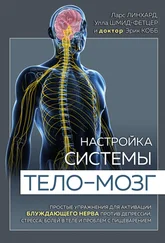42. Bridges A. Pedaling away from Parkinson’s. Santa Barbara Independent. August 11, 2014.
43. Reynolds G. What Parkinson’s teaches us about the brain. Well (блог), New York Times. October 12, 2011. https://well.blogs.nytimes. com/2011/10/12/what-parkinsons-teaches-us-about-the-brain. Accessed June 27, 2019.
44. Pedaling for Parkinson’s. www.pedalingforparkinsons.org. Accessed March 14, 2019.
45. Bridges A. Pedaling away from Parkinson’s. Santa Barbara Independent. August 11, 2014; Pedaling for Parkinson’s. www.pedalingforparkinsons. org. Accessed March 14, 2019.
46. Ridgel AL, Vitek JL, Alberts JL. Forced, not voluntary, exercise improves motor function in Parkinson’s disease patients. Neurorehabilitation and Neural Repair. 2009;23(6):600–608.
47. Alberts JL, Linder SM, Penko AL, Lowe MJ, Phillips M. It is not about the bike, it is about the pedaling: forced exercise and Parkinson’s disease. Exercise and Sport Sciences Reviews. 2011;39(4):177–186.
48. Там же.
49. Goodwin VA, Richards SH, Taylor RS, Taylor AH, Campbell JL. The effectiveness of exercise interventions for people with Parkinson’s disease: a systematic review and meta-analysis. Movement Disorders. 2008;23(5):631–640.
50. Muller J, Myers J. Association between physical fitness, cardiovascular risk factors, and Parkinson’s disease. European Journal of Preventive Cardiology. 2018;25(13):1409–1415.
51. Fang X, Han D, Cheng Q, et al. Association of levels of physical activity with risk of Parkinson disease: a systematic review and meta-analysis. JAMA Network Open. 2018; 1 (5):e182421; Thacker EL, Chen H, Patel AV, et al. Recreational physical activity and risk of Parkinson’s disease. Movement Disorders. 2008;23(1):69–74.
52. Ascherio A, Schwarzschild MA. The epidemiology of Parkinson’s disease: risk factors and prevention. Lancet Neurology. 2016;15(12):1257–1272; Sun Q, Townsend MK, Okereke OI, Franco OH, Hu FB, Grodstein F. Physical activity at midlife in relation to successful survival in women at age 70 years or older. Archives of Internal Medicine. 2010;170(2):194–201; Myers J, Prakash M, Froelicher V, Do D, Partington S, Atwood JE. Exercise capacity and mortality among men referred for exercise testing. New England Journal of Medicine. 2002;346(11):793–801; Gebel K, Ding D, Chey T, Stamatakis E, Brown WJ, Bauman AE. Effect of moderate to vigorous physical activity on all-cause mortality in middle-aged and older Australians. JAMA Internal Medicine . 2015;175(6):970–977.
53. Fang X, Han D, Cheng Q, et al. Association of levels of physical activity with risk of Parkinson disease: a systematic review and meta-analysis. JAMA Network Open. 2018;1(5):e182421; Metabolic equivalent. Wikipedia. https://en.wikipedia.org/wiki/ Metabolic_equivalent. Accessed October 15, 2018.
54. Serra-Majem L, Roman B, Estruch R. Scientific evidence of interventions using the Mediterranean diet: a systemic review. Nutritional Review. 2006;64:S27-S47; Casini A, Gensini GF, Abbate R, Sofi F. Accruing evidence on benefits of adherence to the Mediterranean diet on health: an updated systematic review and meta-analysis. American Journal of Clinical Nutrition. 2010;92(5):1189–1196.
55. Casini A, Gensini GF, Abbate R, Sofi F. Accruing evidence on benefits of adherence to the Mediterranean diet on health: an updated systematic review and meta-analysis. American Journal of Clinical Nutrition. 2010;92(5):1189–1196.
56. Alcalay RN, Gu Y, Mejia-Santana H, Cote L, Marder KS, Scarmeas N. The association between Mediterranean diet adherence and Parkinson’s disease. Movement Disorders. 2012;27(6):771–774.
57. Gao X, Chen H, Fung TT, et al. Prospective study of dietary pattern and risk of Parkinson disease. American Journal of Clinical Nutrition. 2007;86(5):1486–1494.
58. Alcalay RN, Gu Y, Mejia-Santana H, Cote L, Marder KS, Scarmeas N. The association between Mediterranean diet adherence and Parkinson’s disease. Movement Disorders. 2012;27(6):771–774; Sofi F, Cesari F, Abbate R, Gensini GF, Casini A. Adherence to Mediterranean diet and health status: meta-analysis. BMJ. 2008;337.
59. Alcalay RN, Gu Y, Mejia-Santana H, Cote L, Marder KS, Scarmeas N. The association between Mediterranean diet adherence and Parkinson’s disease. Movement Disorders. 2012;27(6):771–774.
60. Gao X, Chen H, Fung TT, et al. Prospective study of dietary pattern and risk of Parkinson disease. American Journal of Clinical Nutrition . 2007;86(5):1486–1494.
61. Jin H, Kanthasamy A, Ghosh A, Anantharam V, Kalyanaraman B, Kanthasamy AG. Mitochondria-targeted antioxidants for treatment of Parkinson’s disease: preclinical and clinical outcomes. Biochimica et Biophysica Acta. 2014;1842(8):1282–1294.
62. Ross G, Abbott RD, Petrovitch H, et al. Association of coffee and caffeine intake with the risk of Parkinson disease. JAMA. 2000;283(20):2674–2679; Paganini-Hill A. Risk factors for Parkinson’s disease: the leisure world cohort study. Neuroepidemiology. 2001;20(2):118–124; Ascherio A, Zhang SM, Hernan MA, et al. Prospective study of caffeine consumption and risk of Parkinson’s disease in men and women. Annals of Neurology . 2001;50(1):56–63; Hernan MA, Takkouche B, Caamano-Isorna F, Gestal-Otero JJ. A metaanalysis of coffee drinking, cigarette smoking, and the risk of Parkinson’s disease. Annals of Neurology . 2002;52(3):276–284; Tan LC, Koh WP, Yuan JM, et al. Differential effects of black versus green tea on risk of Parkinson’s disease in the Singapore Chinese Health Study. American Journal of Epidemiology. 2008;167(5):553–560; Liu R, Guo X, Park Y, et al. Caffeine intake, smoking, and risk of Parkinson disease in men and women. American Journal of Epidemiology. 2012;175(11):1200–1207.
63. Ross G, Abbott RD, Petrovitch H, et al. Association of coffee and caffeine intake with the risk of Parkinson disease. JAMA. 2000;283(20):2674–2679.
64. Там же.; Munoz DG, Fujioka S. Caffeine and Parkinson disease: a possible diagnostic and pathogenic breakthrough. Neurology. 2018;90(5):205–206.
65. Ascherio A, Zhang SM, Hernan MA, et al. Prospective study of caffeine consumption and risk of Parkinson’s disease in men and women. Annals of Neurology. 2001;5O(1):56–63.
66. Munoz DG, Fujioka S. Caffeine and Parkinson disease: A possible diagnostic and pathogenic breakthrough. Neurology . 2O18;9O(5):2O5-206; Schwarzschild MA, Chen JF, Ascherio A. Caffeinated clues and the promise of adenosine A(2A) antagonists in PD. Neurology . 2002;58(8):1154–1160.
67. Postuma RB, Anang J, Pelletier A, et al. Caffeine as symptomatic treatment for Parkinson disease (Caffi-PD): a randomized trial. Neurology . 2017;89(17):1795–1803.
68. Palacios N, Gao X, McCullough ML, et al. Caffeine and risk of Parkinson’s disease in a large cohort of men and women. Movement Disorders. 2012;27(10):1276–1282.
69. Wikoff D, Welsh BT, Henderson R, et al. Systematic review of the potential adverse effects of caffeine consumption in healthy adults, pregnant women, adolescents, and children. Food and Chemical Toxicology. 2017;109:585–648.
1. JG. JCC Greater Boston – building a new beginning [видео]. YouTube. March 23, 2018. www.youtube.com/watch?v=unw3Ue2DWME.
2. Lagro-Janssen ALM, van den Heuvel EAJ, Bor HH, et al. Prodromal symptoms and early detection of Parkinson’s disease in general practice: a nested case-control study. Family Practice. 2014;31(4):373–378; Gonera EG, Hof MVt, Berger HJC, van Weel C, Horstink MWIM. Symptoms and duration of the prodromal phase in Parkinson’s disease. Movement Disorders . 1997;12(6):871–876.
Читать дальше
Конец ознакомительного отрывка
Купить книгу












